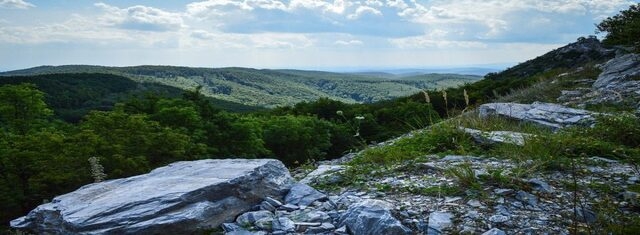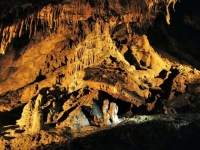Travel
The Beautiful Bükk Mountain Range
A Hungarian Treasure

Bükk Mountain Range
USPA NEWS -
Forests are the most complex associations of the nature, they are indispensable values of the mankind. The forest provides raw material, food, it provides oxygen and protects the human environment, gives the opportunity of resting and recreation to the visitors.
People living in the Bükk have always based their existence on the forests. Charcoal burning, potassium carbonate and shingle-making. Nowadays the methods of planned forestry (plantation, soil cultivation and protection) make it possible to practice continuous intensive forest management. Most of the forests of the Bükk Mountains are natural, except the pine plantations.
The Bükk National Park was founded in 1976, and since then it strives for the introduction and usage of new, natural methods of forest management. One of the most important tasks is to reduce the population of game to the natural level. In the last few years fewer pines were planted. It is the task of the National Park to prevent and avoid useless wood-cutting or wood-felling larger than 10 hectares.
The Bükk National Park was founded in 1976, and since then it strives for the introduction and usage of new, natural methods of forest management. One of the most important tasks is to reduce the population of game to the natural level. In the last few years fewer pines were planted. It is the task of the National Park to prevent and avoid useless wood-cutting or wood-felling larger than 10 hectares.
For centuries the forest gave building material and fuel for the neighboring area. The rebirth of nature could compensate the cut or thinned forests. Although the current situation is often very sad, as a result of the stock-breeding and grazing stable meadows developed on the clearings of forests and became the habitats of many rare and valuable species. With the lessening of arable lands the cutting of forests started. The wood-cuttings especially effected the Tartar Maple-oak forests of the lower mountains, nowadays only a few original forest associations can be seen. Mountains in the classical sense were less affected by agriculture.
The industrial revolution of the 19th century disturbed the relative ecological peace. The growing need of wood of the mines, glassworks and metallurgy contributed to the decrease of forests. Planned forest management was started In smaller areas even under the reign of Maria Theresa. Today in Hungary the largest closed forest of 130.000 hectares can be found in the Bükk.
The industrial revolution of the 19th century disturbed the relative ecological peace. The growing need of wood of the mines, glassworks and metallurgy contributed to the decrease of forests. Planned forest management was started In smaller areas even under the reign of Maria Theresa. Today in Hungary the largest closed forest of 130.000 hectares can be found in the Bükk.
The 26 hectares large, 200 years old "Virgin forest" is made up of beech. Its 40 meters tall trees, moss-grown trunks are witnesses of old times. The "old spruces" of Jávorkút is the first pine plantation of the Bükk. There are two native pines in the area: the juniper tree (Juniperus communis) and the yew tree (Taxus baccata). The oldest ones are older than 150 years.
The flora of the Bükk National Park is very rich and diverse, it is rightly deserves protection and attention. There are approximately 2500 vascular plants in Hungary, 1500 of them can be found also in the Bükk National Park. 500 plants are protected in Hungary and more than 200 live in the Bükk National Park.
The presence of various plants and associations is due to several factors, thus the geological characteristics, the bedrock, the special types of soil, the climate and the usage of the land. Due to the differences in height, there are special floral zones in the Bükk National Park. While several eastern plants (like yellow pheasant's eye, paque flower, amygdala) live at the foothills, in the plateau and the northern edge of the Bükk we can find relic montane plant species (like yellow wood violet, Alpine clamatis, hemerocallis) which live only here in Hungary. The relic plant species which lived in very small areas, got used to the changed circumstances and became independent native species. There are two special, native plant species in Bükk National Park, the strictly protected Vrabélyi hesperis and Hungarian hare's-tail grass.
Bükk National Park is over 400,000 hectares with dense forests and towering mountains that you can hike through to experience the incredible beauty of this country. This is one of the more popular spots for tourists to go when they want to be in nature. The majority of this park is made up of trees, so there are many different species of birds that you will find. Some of these birds are considered endangered, so it’s the only place you will find them.
This park is home to Istvanlapa, one of the deepest caves in Hungary. When you are looking for a great place to visit while in this country, Bükk National Park is an excellent choice.
This park is home to Istvanlapa, one of the deepest caves in Hungary. When you are looking for a great place to visit while in this country, Bükk National Park is an excellent choice.
Thank you for reading my article. These are merely my thoughts and insights based on the facts. I use only verified sources. No fake news here. I write about a variety of subjects, mainly things I want to research and know more about. You can check out my website – Small Village Life at smallvillagelife.com, where I share useful articles and news.
Wendy writes for the United States Press Agency and is a former columnist with the Fulton County Expositor, Wauseon, Ohio.
Sources: Bükk National Park website and govisity for the photos
Wendy writes for the United States Press Agency and is a former columnist with the Fulton County Expositor, Wauseon, Ohio.
Sources: Bükk National Park website and govisity for the photos
more information: https://smallvillagelife.com/2022/04/29/the-beautiful-bukk-mountain-range/
Liability for this article lies with the author, who also holds the copyright. Editorial content from USPA may be quoted on other websites as long as the quote comprises no more than 5% of the entire text, is marked as such and the source is named (via hyperlink).







